George sings the praises of the film Stormy Weather!
- George Seminara
- Apr 4, 2023
- 20 min read
The two greatest musicals of the Golden Age of Hollywood were born nearly ten years apart in 1943 and 1952. 1952 gave us Singing in the Rain featuring Gene Kelly, Donald O'Connor and Debbie Reynolds. It's a pretty great comedy with fantastic musical numbers for about two-thirds of the way. Then it becomes an art film with music and dance and climaxes with a big punchy Hollywood ending. I love it! It sort of tells the story of Hollywood's transition from silent movies to talkies, like the recent film Babylon, with musical numbers. (Exactly like Babylon, but lighter, funnier and with musical numbers.)

But that's not what we're here for today. Today it's all about 1943's Stormy Weather. It contains twenty musical numbers in 78 minutes! However, it has its controversy. So, let's drag the 600-pound gorilla in and put a spotlight on him. Stormy Weather is an all-Black, all-singin', all-dancin' fantasia of I'm not sure what. It's a film that does something that entertainment rarely does. It exposed the line in the sand. The past and the future are on the screen at the same time. After this movie, the representation of African Americans in films would change forever. (It might take a little time for the world to follow, but it's coming.) This might be to the film's detriment, but to the armchair film-historian's pleasure.
It's a great watch if you can suspend yourr disbelief. Supposing you don't overthink it. Don't dwell. Go with it. It's a movie with no white people in it. None! There isn't one white face. This is not the problem because it gets executed so organically that you might have missed it if I didn't mention it. The film is chock-a-block with every shade of brown available on earth, which was probably a nightmare for the cinematographer.
"What?! What's George talking about?"
Okay, I'll explain. What people are, you know, white. As such, light reflects off them in a reasonably predictable way.

The first solution Hollywood cinematographers came up with for filming Black actors was to use makeup to lighten the Black actors to a standard "tan." After all, motion picture films can only capture what gets reflected. It's 10th grade physics, folks. The phenomena of the reflection of light versus absorption of light. Hence, the darker the actor, the more light is absorbed, and the more light is required to see him; the lighter he is, the less light.
Stormy Weather is not overexposed to compensate. Many of the film's scenes take place in nightclubs or at night, and there are rich shadows and a nice spread of shadow and light throughout, as you would expect in any Hollywood film of this vintage. But it's more challenging than you might think. I shot many rap videos throughout my career, and I wouldn't say it's a nightmare, but it's not easy exposing the film effectively for all grades of skin pigment.
The care was crucial to the film's release. The director, Andrew L. Sullivan, and cinematographer, Leon Shamroy, pushed 20th Century Fox to release the movie in a sepia tone. Shamroy felt that the film would benefit from the toning, and it would highlight his work better. Sullivan agreed.
Note #1:
You may have heard the term "blocking the scene." This speaks to two major elements of the actor in the scene. The first is hitting their marks so that the assistant cameraman knows where the focus will be for the actor. That whole thing with the tape measure is what that's about. The second element is for the actor to hit their light. That allows the master shot and close-ups to create a specific mood. To compensate for gradations of skin tone and to get theat sparkle in the eye or to give a star that beauty treatment. There are a lot of lighting marks at work in this film. Bill Robinson was very dark, and Lena Horne was very light. They are often on screen together. Such a headache!

Stormy Weather is loosely based upon the life of its star, dancer Bill "Bojangles" Robinson, in his last role. "Uncle Bill," Williamson recounts his fabulous life to some neighborhood children through a series of flashbacks. This is not unlike the device in Walt Disney's Song of the South. Bill lives in a bucolic suburban setting. The kids gather around him because he is being heralded for his extraordinary career in entertainment. He even shows the kids a magazine cover of a Life Magazine-style periodical, where in bold type his picture is written. (I'm breaking out in hives over this, people.) "Celebrating the magnificent contribution fo the colored race to the entertainment of the world during the past twenty-five years." I didn't say there weren't enormous problems with this film.
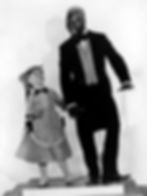
Okay, back to the safety of bill and the kids. Evidently, Bill has also taught many children how to dance, and with the youngest child, a little girl, they execute a cute little routine. I suspect this was to reinforce the memory of Bill Robinson's appearances in the Shirley Temple films. At some point, a car pulls up with the great Cab Calloway at the wheel. All the kids instantly recognize him. There will be a big tribute show for Bill to benefit the boys going to World War II. (It's not very clear but roll with it.

The flashbacks show his return home in 1919 after serving in World War I. While visiting a nightclub with his pal, Gabe (Casablanca's Sam, Dooley Wilson), he meets the beautiful singer/dancer Selina Rogers, the sister of one of his war buddies who didn't make it back alive. A point that never gets mentioned as if it were a sad thing. Just one of a couple of these little narrative problems.
Note #2:
According to Bill Robinson, he was a rifleman in the first World War with New York's 15th Infantry Regiment of the National Guard. The Regiment was renamed the 369th Infantry while serving under France's Fourth Army and earned the nom de guerre, "The Harlem Hellfighters." Quite the heroic group. A section of the Harlem River Drive in New York City is named in their honor. (It might be just the exit ramp. I'm not sure. Jo DiMaggio has a small portion of the West Side Highway, but it's about 16 blocks long.)

You notice something immediately when Lena Horne and Bill Robinson have their first scene. They appear to be acting in two different films. Lena is natural and cofident while Bill acts like the stereotypical "happy slave" in movies from the silent era and in his star turns with Shirley Temple. He has a big smile, non-aggressive hand motions, and wide-open eyes as the centerpiece of his acting. I know he's not an actor. The man is a superb dancer. African American writer Donald Bogle called him, "the quintessential Tom," because of his cheerful and shameless subservience to whites in film. Bogle says that his film persona and his real-life were polar opposites. My question about his choices here is, "There ain't any white people in this movie. Why act as if there were?"
Note #3:
Donald Bogle wrote the book Toms, Coons, Mulattoes, Mammies and Bucks. It is an excellent document discussing the evolution of roles of African American actors throughout the history of cinema.
Another problem here is the age difference. The beautiful and talented Lena Horne was 26 years old. Bill Robinson was 67 years old. I don't care if you are Viola Davis or Meryl Streep. It is a tricky proposition. Finding some sexual chemistry, hell, any chemistry, with a man who might be older than your grandfather? Whew, that's tough! Kudos to Ms. Horne!
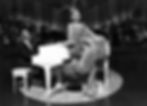
Lena wows the audience, and me, with There's No Two Ways About Love. And yet another problem is the following two musical numbers. The first is the Cakewalk. A little bit of history from first-hand accounts of formerly enslaved people described the Cakewalk as a mockery of the formal, mannered dancing practiced by slaveholding whites. The enslaved people would dress in the handed-down finery of their owners and comically exaggerate the poised movements of minutes and waltzes performed by said owners. The women stand, Busby Berkeley-style, on a giant cake. Their backs face us to present the most horrific Aunt Jemima stereotype. Thankfully, the music swells, and they turn around to reveal a bevy of dancing beauties in lovely gowns who execute the Cakewalk with style and grace. They literally place the stereotype behind them. And then, it returns with the following number: CamptTown Races (Doo Dah, Doo Dah). I said this film was problematic.

Bill travels to Memphis to restart his career as a performer. He works his way to Memphis on what, I suspect, is a riverboat as a porter. While sleeping on a bale of cotton (ugh!), he says, "If I never see a bale of cotton no more in life, that'll be too soon." Bill gets up to the sound of a band rehearsing on the boat. His co-worker says, "Must be those travelin' minstrel boys got on in New Orleans." Bill rubs his eyes and wanders over to witness a wild Jazz number in progress. It is an intoxicatingly exciting scene with some wild scat singing. Bill takes some sand from a nearby fire bucket. (This is before fire extinguishers, and they bare on a boat where fire can be catastrophic.) He throws sand on the ground an performs his famous "sand dance" to the new Jazz rhythm. It climaxes with Bill jumping up and down to the beat, and each band member joins him in jumpin'. This scene might not sound exciting, but it is. Bill displays some pretty impressive footwork for anyone, let along a guy who can ride the bus for half price.

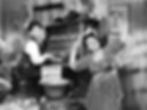
He secures employment in a below-grade Jazz club. (It's a pretty awesome Jazz club, but it's underground.) The scene opens with a performance by legendary blues singer Ada Brown. She is backed by a band fronted by the incredible Fats Waller. After some chit-chat to further the plot, we see Bill working as a waiter. The chit-chat ends in time for Fats Waller to perform Ain't Misbehaving. At the end of the song, he is reunited with Selina. She arrives with a particularly flinty Chick Bailey. Selina begs Chick to hire Bill for their show.

If you thought the bale of cotton gag was bad, in his first shot on stage in Chick's Revue, Bill wears a loincloth with tribal markings sitting in a tree on the very top branch. (For a gent of his age, he is remarkably fit. I'm younger than he was and... Never mind!) Bill is disappointedly banging on a drum as most of the action is below him. Lena belts out a fine rendition of Digga Digga Doo. Bill is happy about the job but feels his talents are getting wasted. Chick Bailey performs a number, accompanied by many more tribesmen banging away on large drums. There is another disconnect as Chick is dressed in Caribbean Style and surrounded by Hollywoodized African tribesmen. These drums a set up on many levels across the stage. By the way, Chick Bailey is in real-life singer, composer, actor, poet, and former bouncer at the Savoy Ballroom, the Brooklyn-born Emmett "Babe" Wallace. Babe enjoyed a 70-year career and passed at 97 years of age.

But what song does he sing? Who cares. While he is singing, Bill jumps up on the drum and dances along to the music on top of it. He then jumps to the next drum and then from drum to drum throughout Chick's song. The audience goes wild. Personally, I'm afraid Bill will fall off and break a hip. It's a dazzling bit of footwork and acrobatics executed by a man who should be living in a retirement community somewhere. Chick exits the stage with, "Wow, that song has never gotten that kind of response before!" When he finds out why, Chick fires Bill for outdoing him on stage.
The name of the song Chick sings is called the African Dance. The music was composed by Clarence Muse and Connie Bemis. With lyrics by Langston Hughes. Yes, THAT Langston Hughes.
Bill stages a show of his own. Unfortunately, he runs out of money to pay his cast up front, and they refuse to take the stage. Eventually, they do, due to a stroke of luck. Bill meets his old friend, Gabe, who is now shining shoes on a street corner in Harlem. Gabe arrives at the Theater in a chauffer driven limousine, piloted by his cousin, who works for the actual owner of the car. Gabe is wearing a tuxedo and claims to be the Angel that will guarantee their pay. He is confident that the show will be a hit and that the box office receipts will more than cover their back pay.
Bill's show is mostly classy. There is a very odd, but I'm embarrassed to say, funny blackface routine. It would be a funny routine without makeup, but why blackface? Miller and Lyles are African American men in blackface. What!?! They toured the country in Vaudeville after meeting in college. How is this a good idea in the all-Black world of Stormy Weather?
Rabbit Hole:
Thomas D. Rice, the "father of American minstrelsy," was from Manhattan. (To think that blackface minstrel shows began in New York City instead of the Deep South blows my mind.) His extremely popular, happy-dancing blackface character was a sensation with audiences of the 1830-the 1850s. His name became part of America: Jim Crow. (I didn't think I had more mind to blow, boom!) The theory is that the presentation and popularity of the minstrel show subverted the truth and inserted these broad stereotypes as reality in the minds of white audiences.
African American minstrels were common enough in post-Civil War America. Playing to both white and Black audiences. (separately) The comedy was derived by flipping the script back on the broad stereotypes of the white minstrels and playing much better music. Bert Williams, wearing blackface, became one of the pre-eminent entertainers of the Vaudeville era and one of the most popular comedians for all audiences of his time. Amongst other things, he gets credit as being the first Black man to have the leading role in a film, 1914's Darktown Jubilee. He was by far the best-selling Black recording artist before 1920. Williams was the key figure in the development of early 20th-century African American entertainment. In an age when racial inequality and stereotyping were commonplace, he became the first black person to star on Broadway. His presence pushed back racial barriers during his three-decade-long career. W. C. Fields, who appeared on stage with Williams, described him as, "The funniest man I ever saw—and the saddest man I ever knew."
African American comedian Dewey "Pigmeat" Markham (Here come de judge) spent most of his 60-year career wearing blackface. He enjoyed a period of renewed interest in his comedy on college campuses in the 1960s and 1970s, but had to be coaxed out of blackening his face. Convinced that the audience wouldn't laugh if they saw his brown skin. He once told an interviewer, "Minstrel humor isn't white-man's comedy, it's Negro-born and Negro-popular," Markham elaborated that, "It's not aimed at ridiculing anyone; the characters I've created are no more a slur on the Negro than Jackie Gleason's hot-headed bus driver or Art Carney's sewer cleaner or Dean Martin's drunk or Red Skelton's fool or Jack Benny's stinginess are a slur on white men. I am an American Negro comedian, and I'm proud to be all three."
Is it any question why my brain hurts?
Rabbit Hole Note:
Miller and Lyles, features F.E. Miller, one of the seminal figures in developing African American musical Theater on Broadway. He spent most of his decades-long performing career in Blackface. Thankfully, he was also a playwright, director, and lyricist for the legendary Eubie Blake. (For the Broadway musical Eubie! Miller shared the Tony Award for best musical.) The original Lyles died 15 years before and was played in this film by Johnny Lee, whose character is named Lyles. Lee also spent much of his performing career with burnt cork on his face.
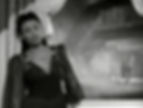
Anyway, Black people in blackface are just weird. Then Lena sings her signature song, Stormy Weather. In the musical break, the camera dollies across the stage through a cut-out to reveal a modern dance routine performed by Katherine Dunham, actress, dancer, choreographer, and anthropologist!?! She and her troop of dancers are under the elevated train at Broadway and 125th Street in the rain. The camera pulls back out for Ms. Horne to finish her song.

Note #4:
Katherine Dunham is called the "matriarch and queen mother of black dance." A graduate of the University of Chicago in Anthropology, she received a post-graduate academic fellowship. She went to the Caribbean to study the African diaspora, ethnography, and local dance. She ran one of the most successful dance companies of the 20th Century and got celebrated the world over—the Katherine Dunham School of Dance and Theatre near Times Square in New York City taught the likes of James Dean, Gregory Peck, Jennifer Jones, Sidney Poitier, Shirley MacLaine and her brother, Warren Beatty. Ms. Dunham would host the leading Jazz players of the day for weekly jam sessions. Legend has it that Marlon Brando would attend and play bongo with the band. Cool Daddy-O!
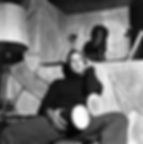
The show is a hit. Backstage, Bill shows Lena the plans for the house he will build for her with that Hollywood money he is now making. What!?! Hollywood money? Where did that come from? But Lena doesn't want to settle down. She has her career to think of. Besides, I didn't see a ring anywhere. Bill, as Beyonce says, "If you liked it, then you shoulda put a ring on it." Do you hear me? "Oh, oh, oh, oh, oh, oh, oh, o-ohh."
Thankfully, at this point in Bill's story, we return to the children. Cab Calloway is collecting "Uncle Bill" to appear in his tribute/benefit show, where he gets reunited with Selina for good. She is finally ready to settle down with an old man with no chemistry. And still no talk about marriage. Does the Hays Code not care about this film? Where was Beyonce? "Oh, oh, oh, oh, oh, oh, oh, o-ohh." But the film's climax is not this closing of the love story loop.

Cab Calloway, his orchestra, and the Nicholas Brothers run away with the film. Towards the film's final moments, Cab leads the band in a raucous version of Jumpin' Jive, which leads the two dancers into one of the most fantastic dance routines ever captured on film. Captured is the word. The brothers, Fayard and Harold, had discussed the dance but still needed to choreograph a routine or learn any steps they might perform.
They were stars on the Vaudeville and Chitlin Circuits and were masters of Flash Dancing. No, it has nothing to do with leg warmers and being a welder for a day job. It has to do with a highly acrobatic form of tap dancing, where the dancer incorporates every flashy move they can think of. They had listened to the takes of the band playing the song and, at the last possible moment, they winged it. What is in the film is the result of just one take. A set, crew, and two brothers danced who together for a living. You don't need anything else.

Most of the dance occurs in front of the proscenium and somewhat lower than the stage, where an oversized half-shell of a double staircase looms behind them. Slightly reminiscent of Mr. Bojangle's famous staircase dance that he taught a bit to Shirley Temple seven years earlier. But it's only the staircase that means anything after the Nicholas Brothers hit the screen. They dance all over it, ending in the most astounding series of moves I have ever seen. They dance up one side and then progress down the stairs by leaping into the air and doing a split, and then landing in that split on the step below the preceding brother. Alternating, Harold and the Fayard until they are both on the ground in a full split. Just writing that has caused my boys to retract into my stomach. (I'm glad my breeding years are theoretically behind me, sure I could contribute to another offspring, but no one wants that.) Of course, they both pop up and dance off the screen onto another stage set, where even more dancing occurs.

It's breathtaking. It's a big happy Hollywood ending from this curious world of Stormy weather. Fred Astaire said the Jumpin' Jive dance sequence was "the greatest movie musical number he had ever seen." Fred also noted that Bill Robinson was the greatest tap dancer that ever lived! Unfortunately, Fred pays tribute to Robinson in 1936's Swing Time.
Oh yes, it's a blackface number. Fred sings and dances his way through a Jerome Kern song, Bojangles of Harlem.
Here are some lyrics:
"Ask anyone up Harlem way,
Who that guy Bojangles is.
They may not know who's president,
But just ask 'em who Bojangles is.
Intellectually, I am just as mixed up as I am pleased by this display of music and dance. It was a different time. Different values. Am I mixed up? I say yes.
And now for some background:
The music in Stormy Weather is the popular music of the day, Jazz. Let's discuss it for those unfamiliar with the form or think it is all just noise. In the 20th Century, three uniquely American art forms became prominent: Jazz, Musical Theater, and Comics - Strips or books. Jazz was the popular music from Ragtime at the beginning of the Century, and it evolved through immigration, exploration, and appreciation. Ragtime, Jazz, Blues, Pop, and even Rock and roll share a common root. Even though we may not know Jazz was the most prominent music of the Century. By way of explaining, I will name a series of Jazz performers, Louis Armstrong, Duke Ellington, Bing Crosby, Ella Fitzgerald, Frank Sinatra, Lena Horne, Louis Prima, Rosemary Clooney, Miles Davis, Tony Bennett, Chick Corea, George Benson, Harry Connick Jr. Norah Jones, and Michael Bublé, to name a few. I'm sure most are familiar with these names.
Director Andrew L. Stone was one of those kids who fell in love with the movie business during the silent era. He built his own movie theater in his backyard and would show films to paying customers. He worked odd jobs for various studios before raising a couple of grand to make his first film using the sets he rescued from the trash and storage from the silent version of Scaramouche. Stone would get an Oscar nomination for best original screenplay for his 1956 noir, Julie, which has a fascinating and original plot point where a stewardess has to pilot an airplane to safety. (ever see Airport 1975 or Airplane?) He was a middle-class white guy with minimal experience with African-Americans.
Lena Horne was the first Black actor to sign a seven-year-deal with a major Hollywood studio, Metro-Goldwyn-Mayer (MGM). Still, due to racist practices within the studio system and across the country, Horne was relegated to bit parts or individual musical numbers that could easily be sliced out of films when they played in the volatile Southern states. (What? Are they doing that in Florida?) "They didn't make me into a maid, but they didn't make me anything else either," Horne revealed to Donald Bogle, "I became a butterfly pinned to a column, singing away in Movieland."
Stone's inexperience with African Americans and with musical performances, in general, worked against her. Perhaps Stone lacked the directorial skill to get Horne to bring forth the soulful passion he wanted from the song. After berating Horne to no end, Cab Calloway whispered the name "Ethel Waters" to Horne, prompting her to pay homage to the famed Cotton Club performer's smoldering delivery of the number. When asked about Stormy Weather and its director, she had little say beyond what she felt was the director's and Hollywood's racism.
The studio mistreated the cast, forcing them to use segregated dressing rooms on the other side of the facility. Producers should have provided transportation to and from the set, but they didn't, requiring the cast to walk. Today, studios are enormous. I worked at the Warner Brothers Studios in the 1990s for a while, and traveling from the bungalow to the set was far enough that I'd take a golf cart. Studios were considerably more extensive in those days, and no golf carts existed.
The cinematographer needs a special note, Leon Shamroy was a spectacular cameraman. He amassed an astounding 18 Academy Awards nominations and four wins. He shot the first film using the Cinemascope process. The widescreen aspect ratio was an almost unprecedented challenge for Shamroy. While he helped many directors at Fox in the 1950s to adapt to Cinemascope, Shamroy never liked it. In an interview, he claimed that widescreen "wrecked the art of film for a decade, but widescreen saved the picture business." Despite his distaste for Cinemascope, he was the industry pioneer. In 1956, he utilized Fox's Cinemascope 55 process. (Here we go into the weeds a little, folks.) Shooting 1956s the King and I on a 55mm film format offered increased definition and clarity. Unfortunately, the film was printed on 35mm for release and didn't look as good. Shamroy shot South Pacific two years later in a new process called Todd-AO. with 65mm film. Theaters had more versatile projectors that could change gates and lenses to adapt to any film gauge.
Shamroy was also a perfectionist and a bit of a dick. I am confident that he was solely responsible for the look of the film. And finding the best way to photograph a unique cast was a problem that he would be excited to solve. However, when a dick leads the crew, the crew are all dicks. Lena Horne felt that the director and its crew were all racists, leading to disharmony on the set. Fritz Lang and Henry Fonda complained to studio bosses about Shamroy's brusqueness (I'm being kind) and the crew's disdain for the cast. But, Shamroy was one of the best, so he got away with it. I'm not saying they weren't racist; I'm just stating that he acted that way with everyone.
Stormy Weather's director Andrew L. Stone was incredibly proud of the film as one of the first to present African American culture to audiences. He felt that he was not just making an exciting musical, but that creating an all-Black film at a major studio was an essential step on the road to equal rights. Of course, he said that in the 1960s, and I agree with him, but there is hindsight being 20/20. But Lena had a very different memory.
I'm in a pickle because, as a white guy, I can't gauge this as racist. How racist is it? I don't know. Surely there are scenes, especially with Bill (Bojangles) Robinson, that smack of racism. He became a successful entertainer during the most racist time in our country's history. He broke out of minstrel shows and made it into motion pictures and Broadway. Unfortunately, he was of that previous time. Stormy Weather is meant to be his biopic. But he was too old to change when confronted with the modern age. This was his last appearance on film, and he would die in 1949.
Fun Fact from George's Almanac: Bill Robinson was a great self-promoter who staged many stunts to garner attention. In 1922 he set the world record for running backward (100 yards in 13.5 seconds). The record stood until Paul Wilson broke it in 1977 by Paul Wilson, running the distance in 13.3 seconds.
Bonus Fun Fact: In 1933, Robinson was named an honorary mayor of Harlem for his philanthropic contributions to his community and outstanding success. He took this role seriously, performing over 3,000 benefits throughout his career and aiding hundreds of organized charities and individuals.
Extra Bonus Fun Fact: According to novelist John O'Hara, Bill Robinson coined the word "copacetic."
Stormy Weather opened new roles for African Americans in Hollywood, breaking through old stereotypes and far surpassing the limited parts that were usually available. The film is still mired in stereotypes. Notably, the musical numbers in the movie contain elements of minstrelsy. Unfortunately, Bill Robinson is in many of these scenes. But that was his world. Bill (Bojangles) Robinson came out of the minstrel show. Lena Horne, Cab Calloway, Katherine Dunham, and the Nicholas Brothers forged careers from a very different world. Perhaps their performances are so exciting because they were unapologetically taking the reigns of their own acts by not trying to please white audiences specifically. It is in this film that an actual change in our culture can be seen. It's like a car crash, where one car is totaled while the other isn't. Granted, it would take another 70 years to get where we are now. But Stormy Weather is the first inkling that the past could eventually be put away for good.
Black film theorists have debated this film since the 1960s, and their focus is so deep that reading it added to my general confusion. One author felt it was a white person's idea about black life. Another is how Black people get represented as being akin to musical automatons dancing and singing to the music as if that's all they were there for. To entertain white audiences. However, a few stated that they enjoyed the film despite itself. That's where I started this. If you can suspend your disbelief, this is one of the greatest musicals in history. If you can't, it is an eyebrow-raising document with some excellent musical numbers from a different time.
Lena Horne was born in Brooklyn. (Who wasn't?) She was raised in a show business family. (Okay, dad was a bit of a gangster.) She attended Girl's High School before joining her mother on the road. (Shirley Chisholm was a graduate, and Ella Fitzgerald briefly attended before she got sentenced to Juvie.) She joined Noble Sissle's big band but hated touring. Before going to Hollywood, she found her true place by performing at New York's legendary and integrated Cafe Society. She was outspoken in her views, as you have already heard, and summed up her time in Hollywood. "I was tired of being typecast as a Negro who stands against a pillar singing a song. I did that 20 times too often." After returning to New York, she got caught up on the blacklist.
Once extracted from the Red Scare, Lena limited her screen appearances. She has a great, in a non-singing part as a Madam who marries Richard Widmark in 1969's Death of A Gunfighter, the first film directed by the official Writer's Guild pseudonym Allen Smithee. (actually, Don Siegel in this case.) Lena Horne was the first black woman nominated for a Tony Award. She was an outspoken member of the NAACP and fought for civil rights and was almost an EGOT receiving the Tony and the Grammy but missing out on the Emmy. (She got robbed!) She passed in 2010, and her funeral was attended by a who's who of New York glitterati. (And me!)

Watch for It Came From Hollywood Book 4, and more movies George likes!
COMING SOON!